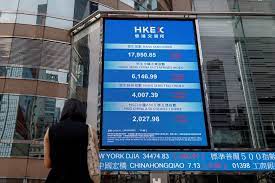SINGAPORE (Reuters) – A look at the day ahead in Asian markets.
Asian markets round out the week on Friday in reasonably good spirits, with a deluge of purchasing managers index data from across the continent and a sprinkling of key indicators from Japan, South Korea and Indonesia the most likely market-moving catalysts.
Friday is also the first trading day of December, so perhaps an opportunity to get the last month of the year off to a positive start.
The Dow Jones on Thursday posted its highest close in nearly two years, and if broader market momentum from November spills over, that is a likely scenario – for some Asian stock markets, November was the best month in a long time.
On the other hand, Thursday’s month-end reversal in the dollar and bonds – the dollar and Treasury yields rose sharply – will sound a loud note of caution.
Unemployment data from Japan, trade data from South Korea, and the latest readout on inflation from Indonesia are among the highlights on the Asian economic calendar, along with a raft of purchasing managers index reports from across the region.
They include Australia, South Korea and India, as well as China’s ‘unofficial’ PMI. The ‘official’ PMI report from the National Bureau of Statistics on Thursday showed that manufacturing activity in China shrank for a second month in November, and at a faster rate than had been expected.
A similar reading on Friday will only enhance the already growing calls for more stimulus.
China’s leading index of blue chip stocks fell 2% in November, its fourth monthly decline in a row. It is down almost 10% year-to-date, underperforming most of its regional and global peers.
The MSCI Asia ex-Japan and emerging market indexes both snapped three-month losing streaks in November, rising 7% or more for their best month since January, while Japan’s Nikkei gained 8.5% for its best month in three years.
The general gloom surrounding China’s economy and financial markets shows little sign of lifting, despite some sporadic positive surprises recently like the strong third quarter GDP growth figures.
A survey by central banking think tank OMFIF of 22 public pension and sovereign wealth funds managing $4.3 trillion in assets, showed that none reported a positive outlook for China’s economy.
They cited the regulatory environment and geopolitics among primary factors dissuading them from investing. Foreigners already appear to be voting with their feet – China just recorded its first-ever quarterly deficit in foreign direct investment.
As more aggressive Fed rate cut expectations chip away at the US dollar, investors are turning more bullish on Asian currencies, a Reuters poll found. Perhaps unsurprisingly, one of the few exceptions is the Chinese yuan.
Still, the yuan is trading around its strongest level against the dollar since June and just clocked its biggest monthly gain in a year, rising around 2.5% in November.







